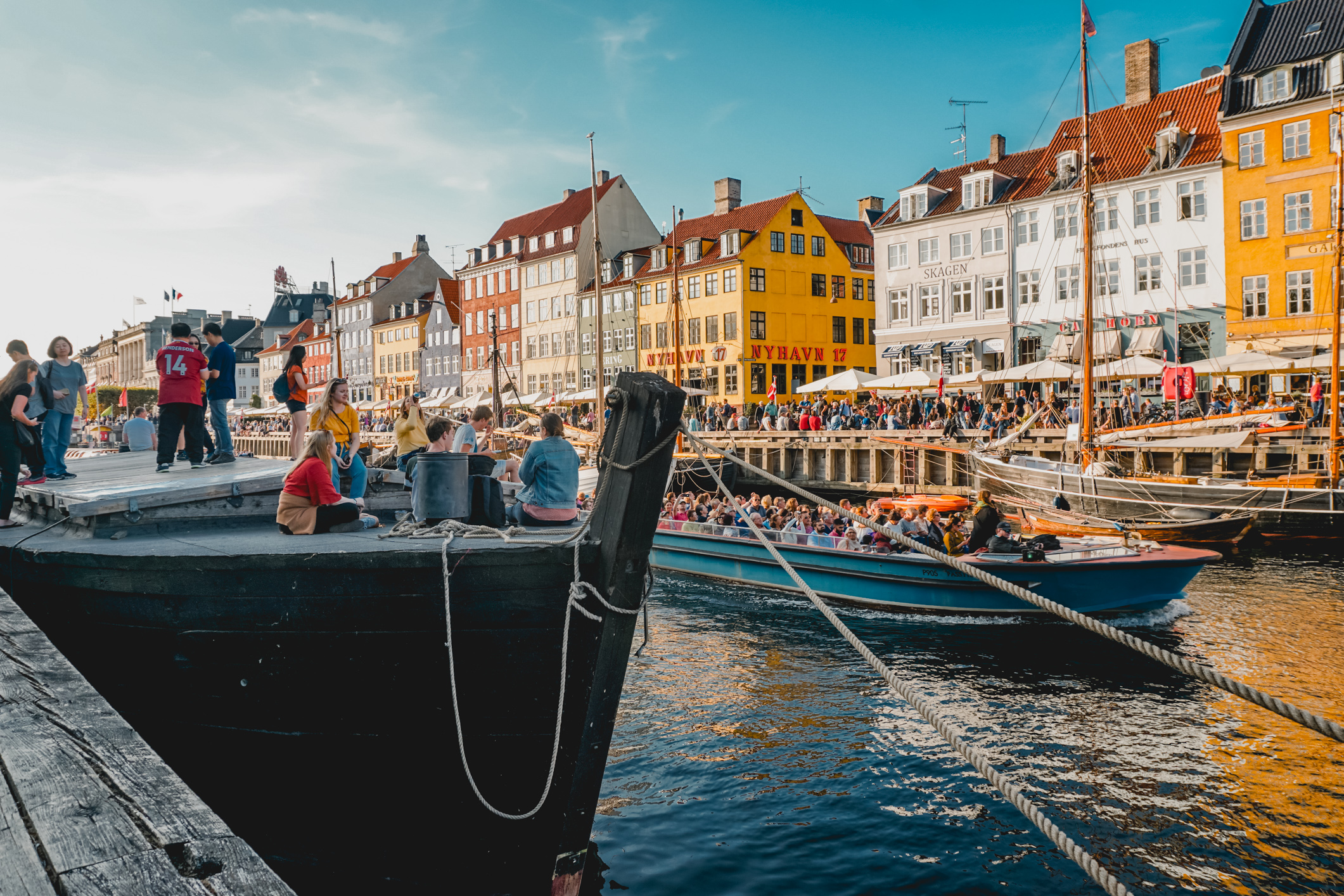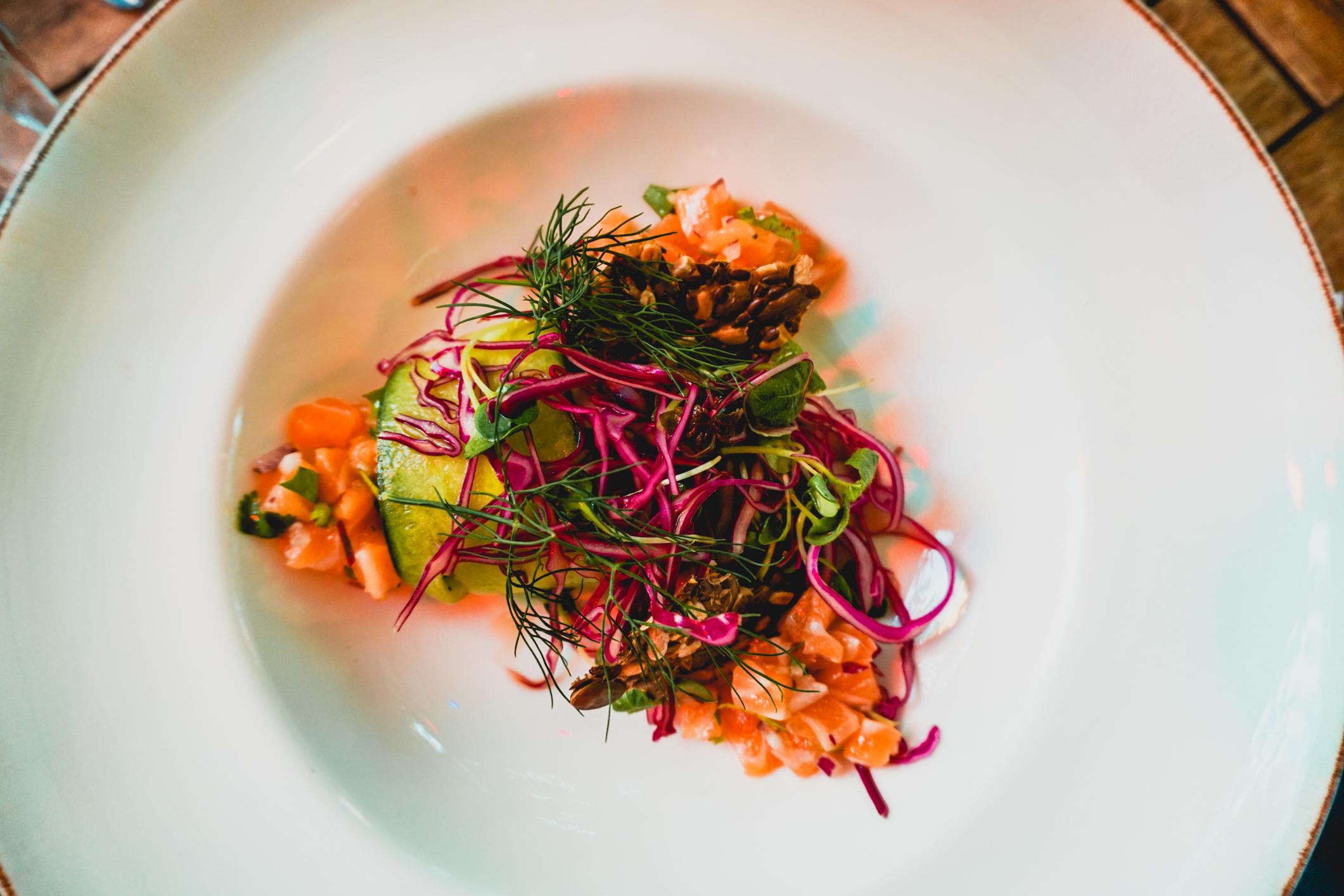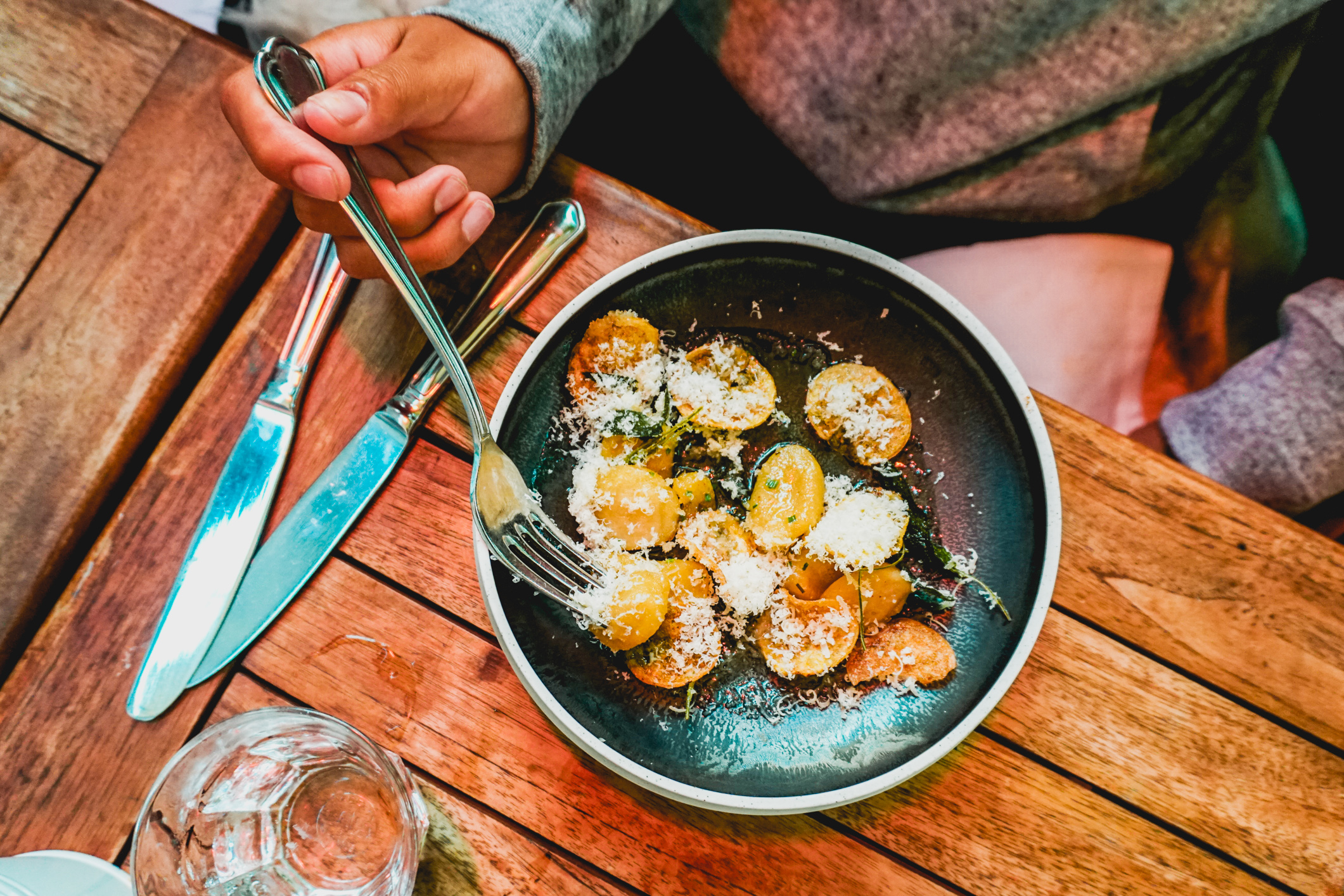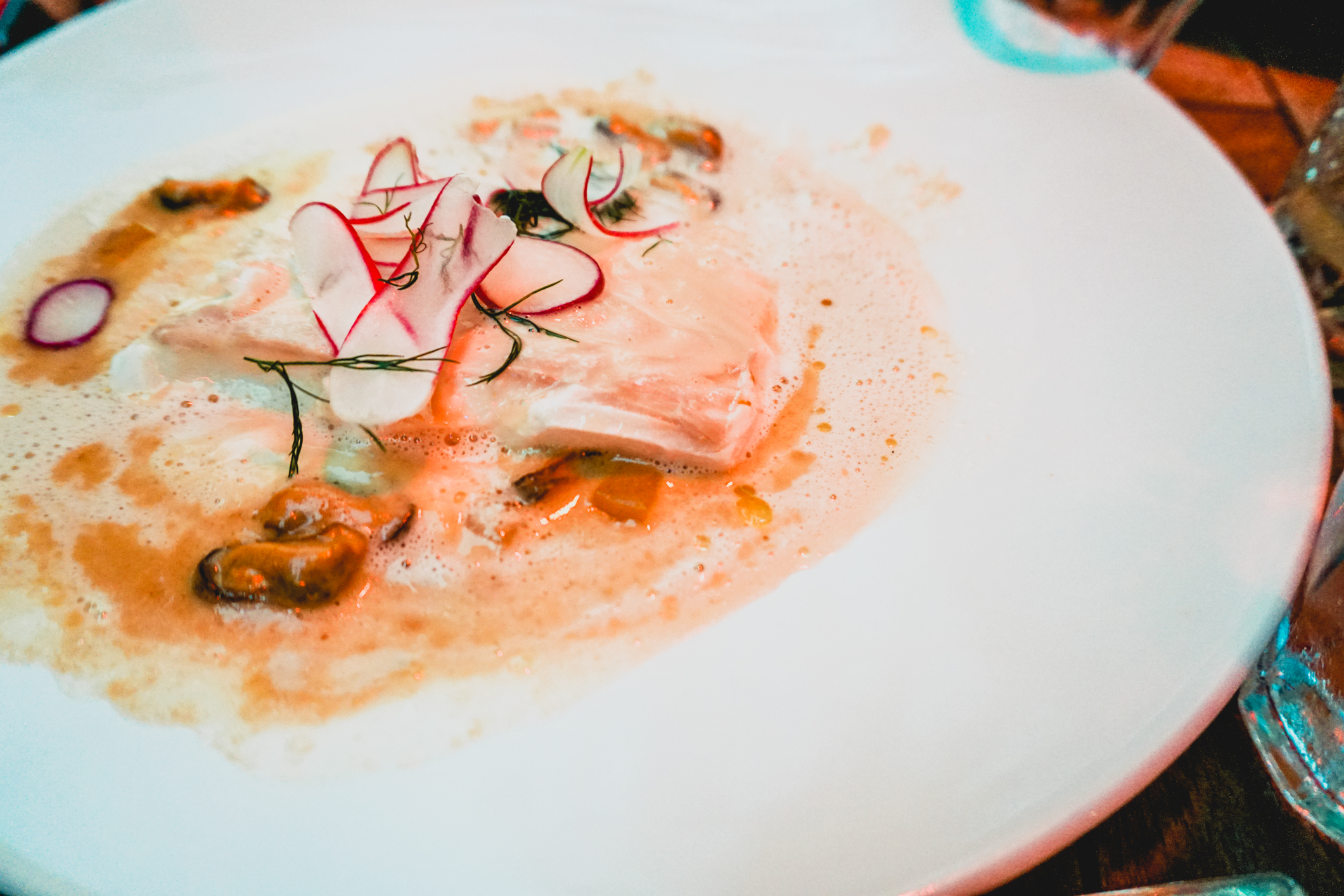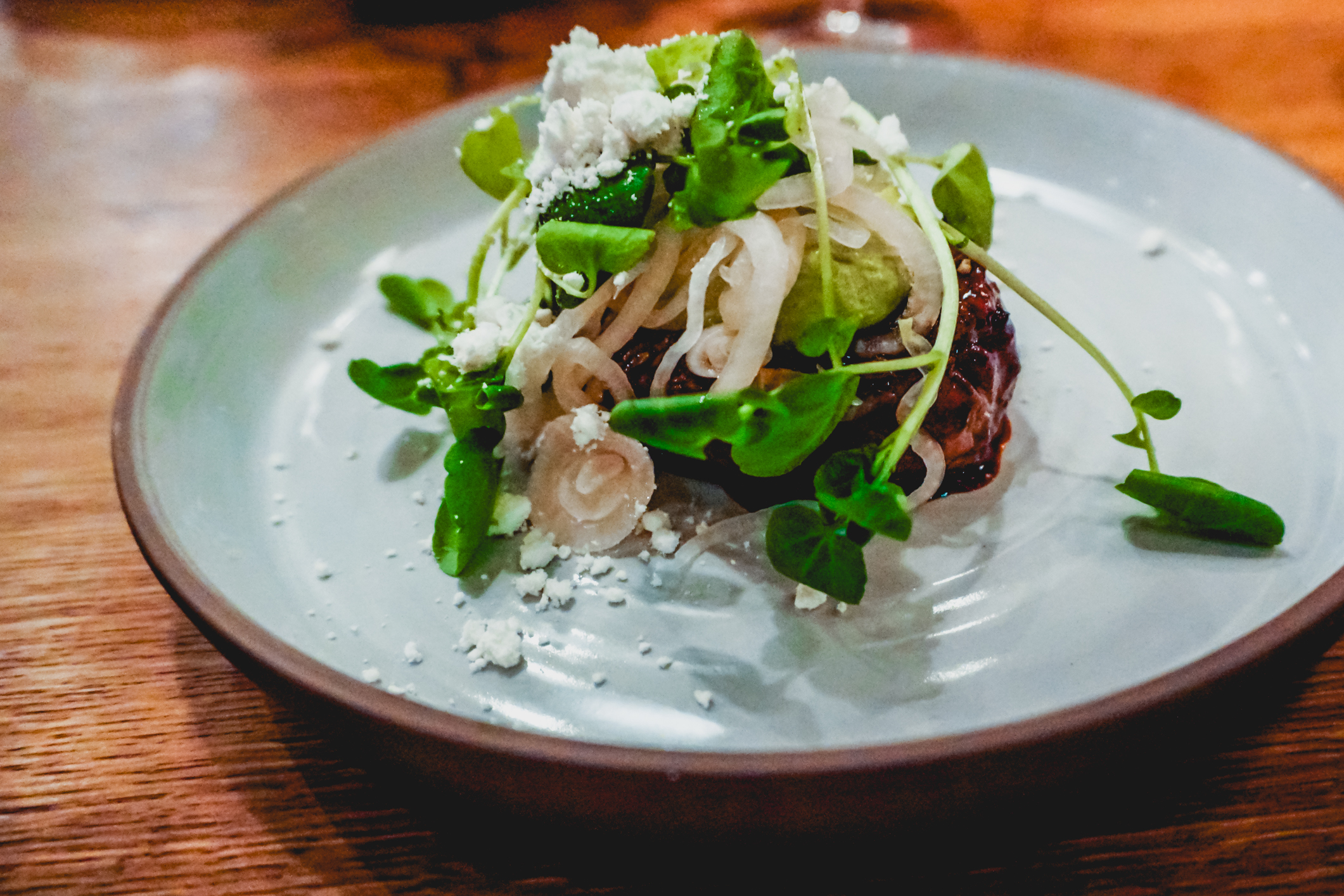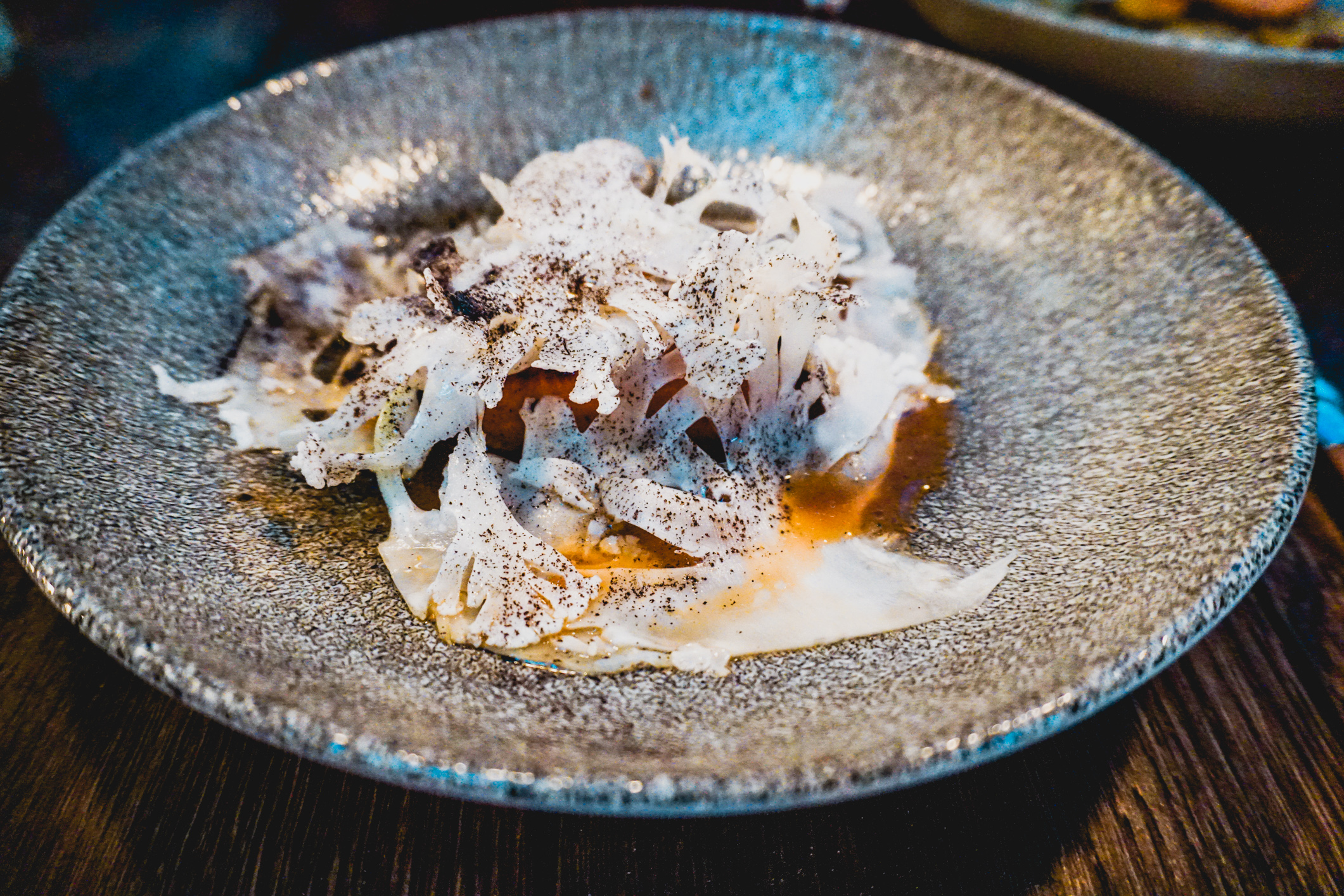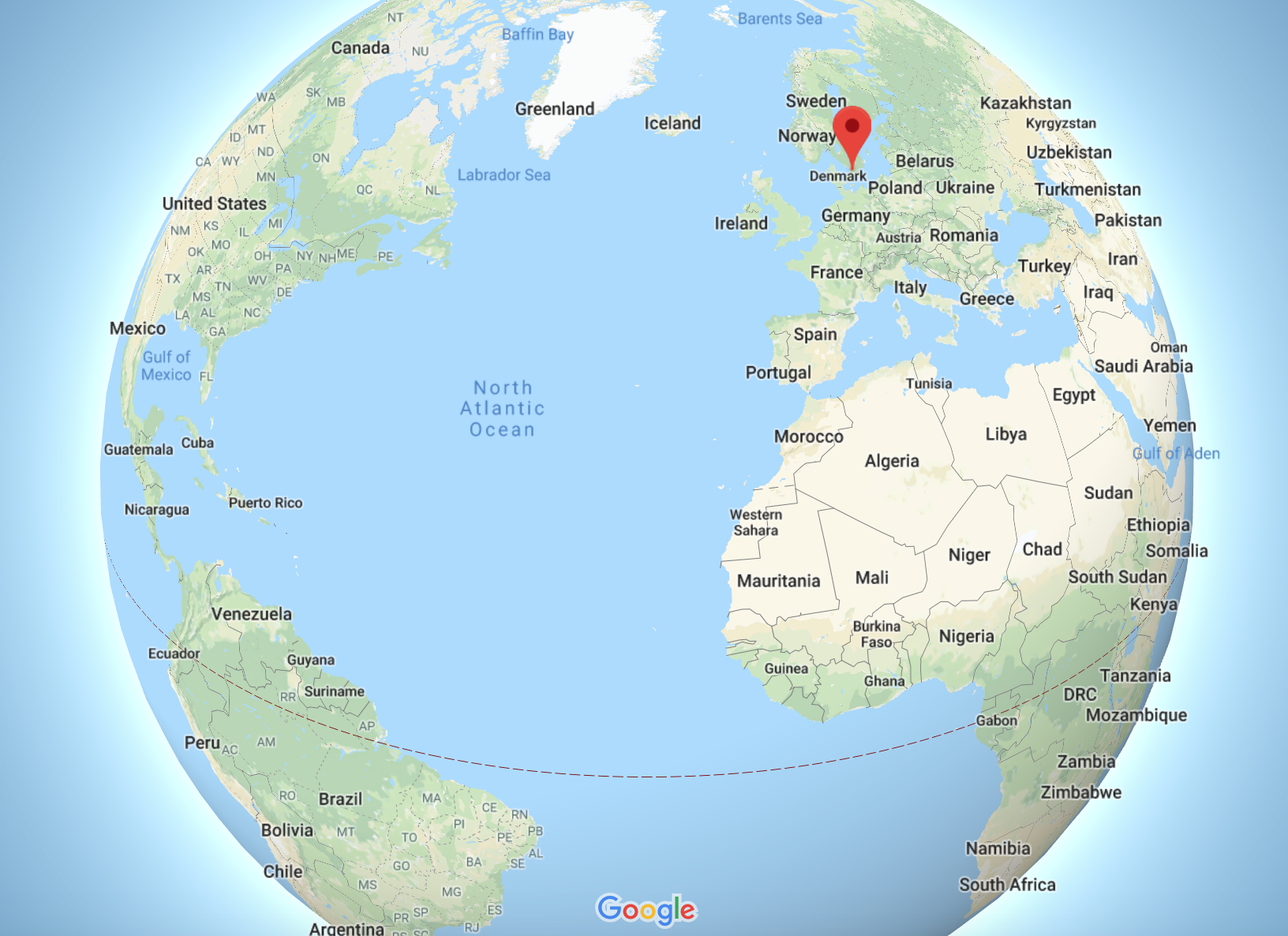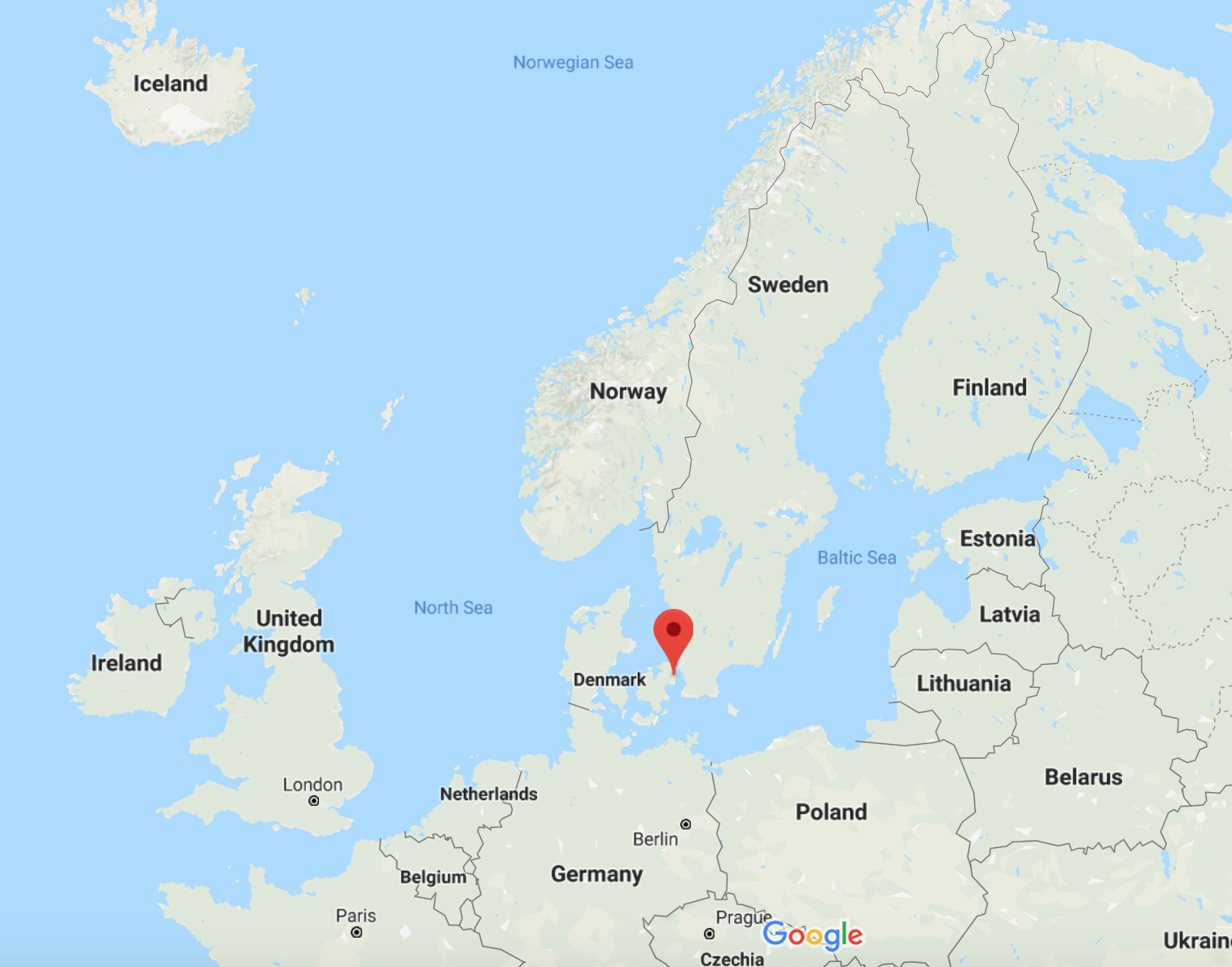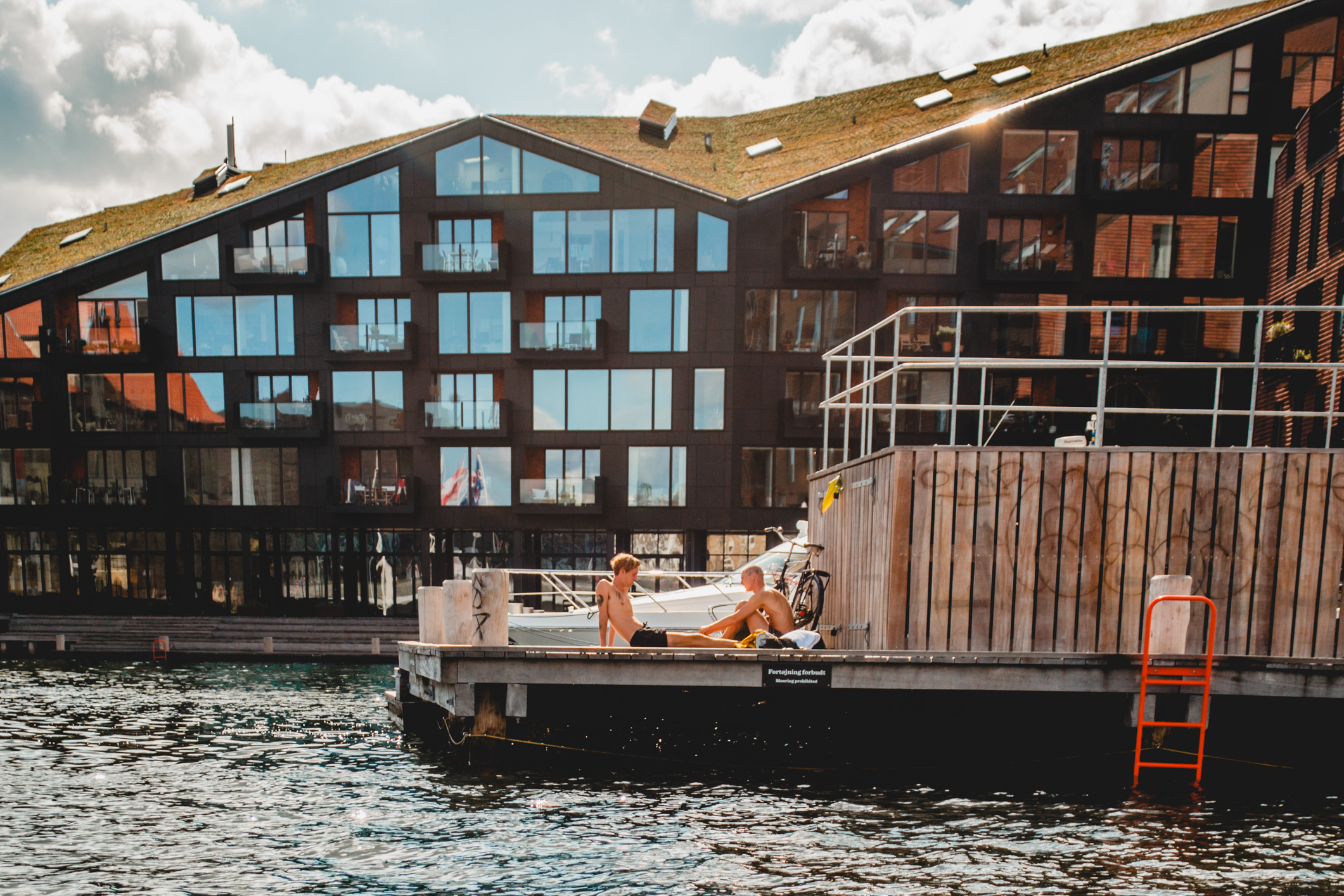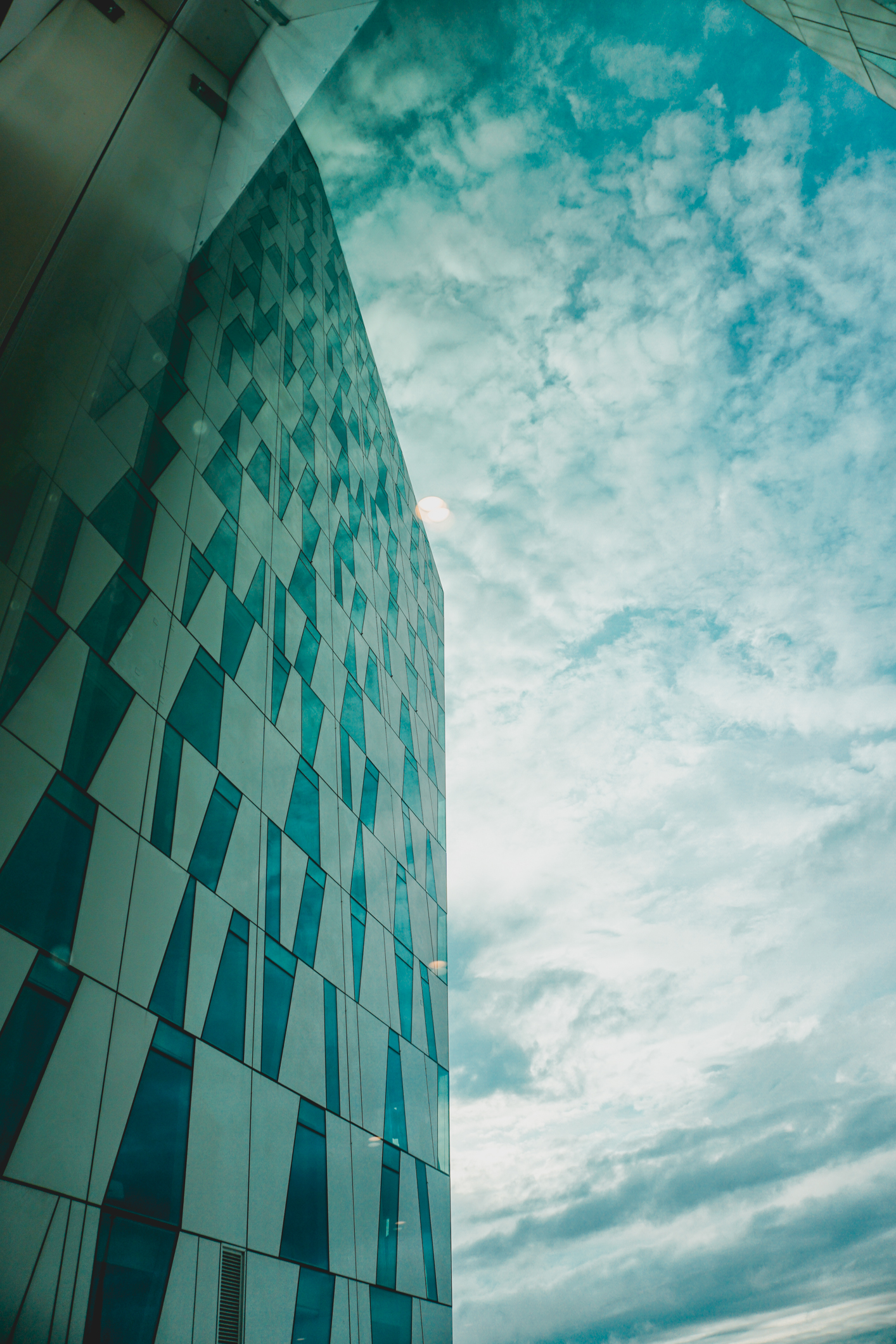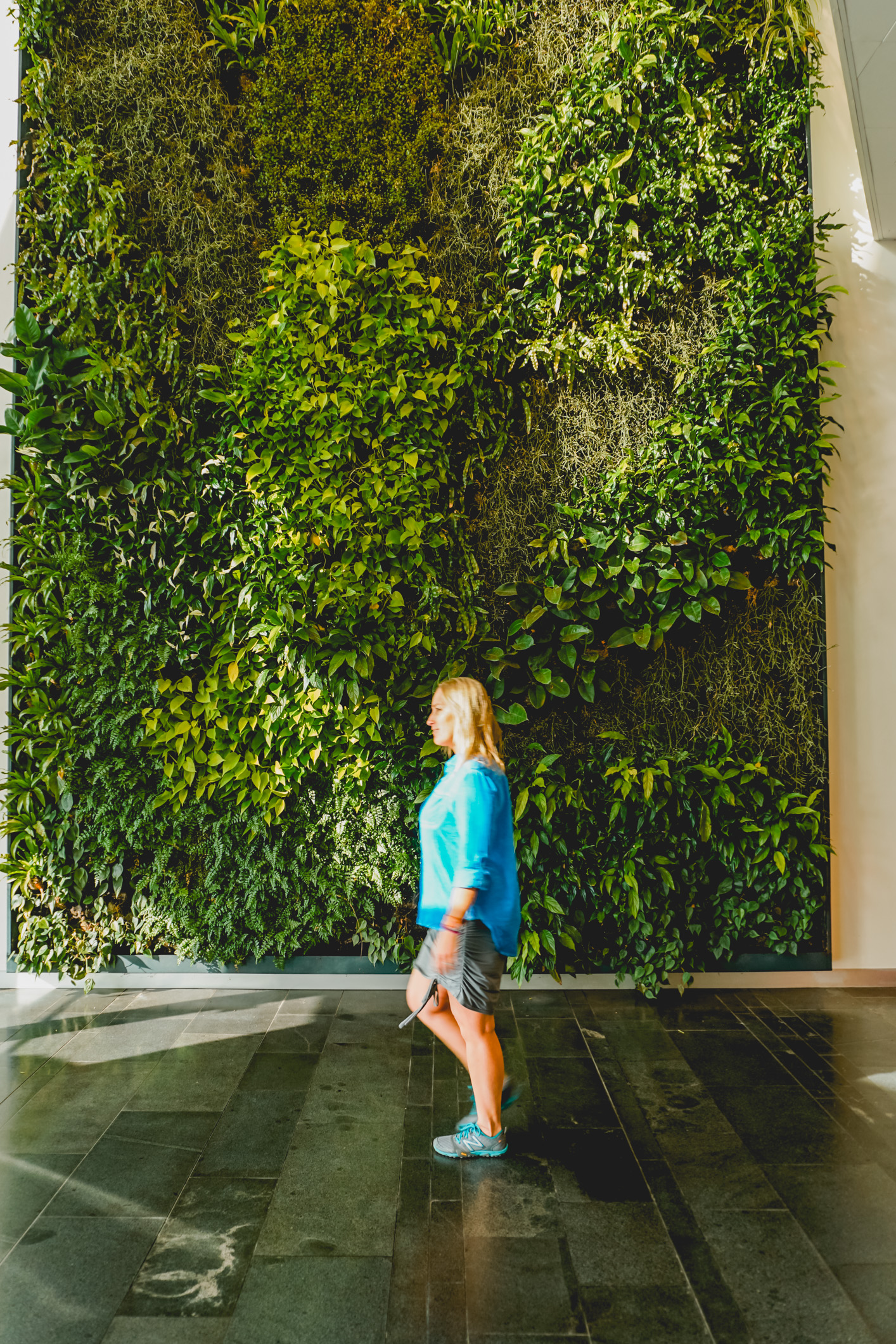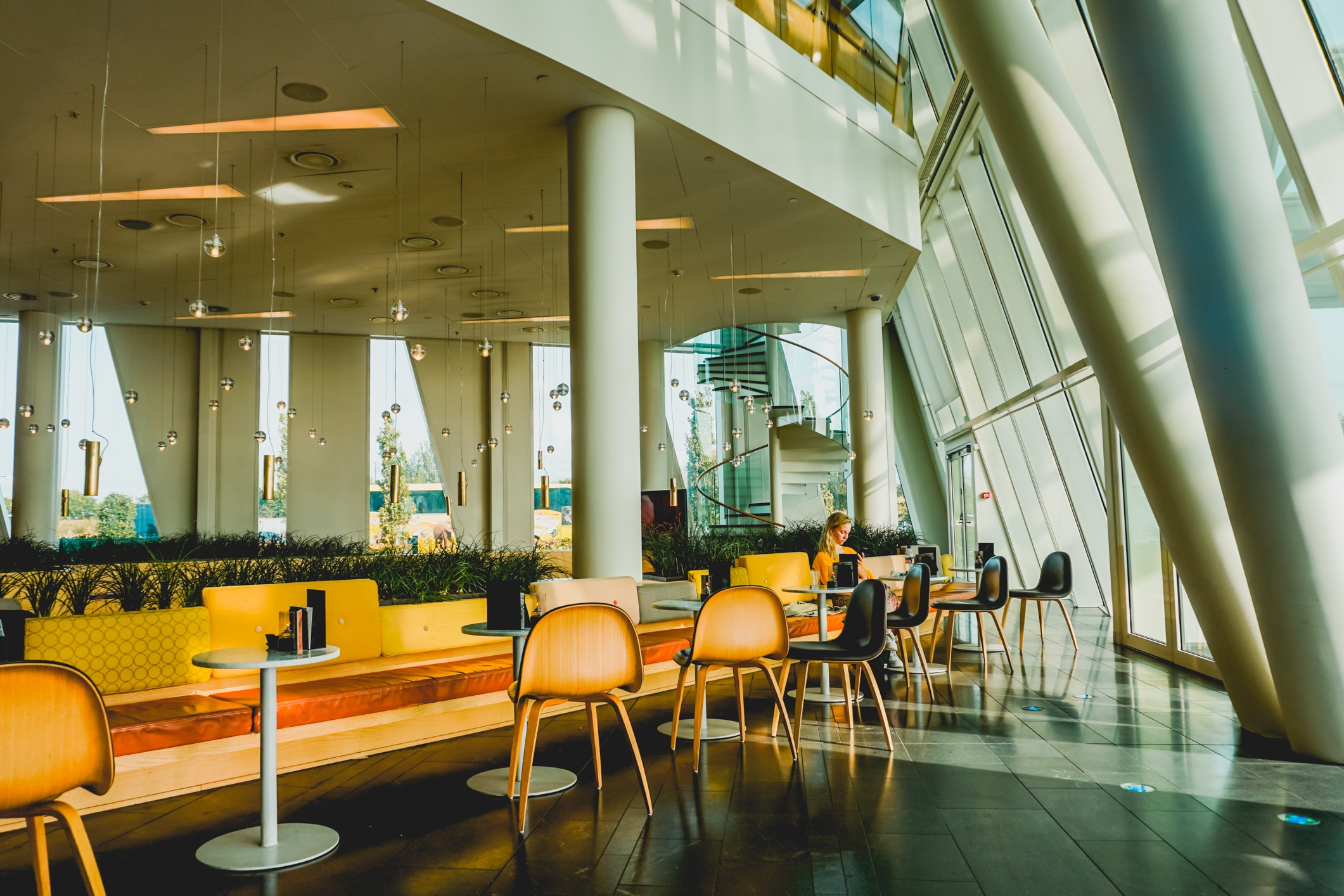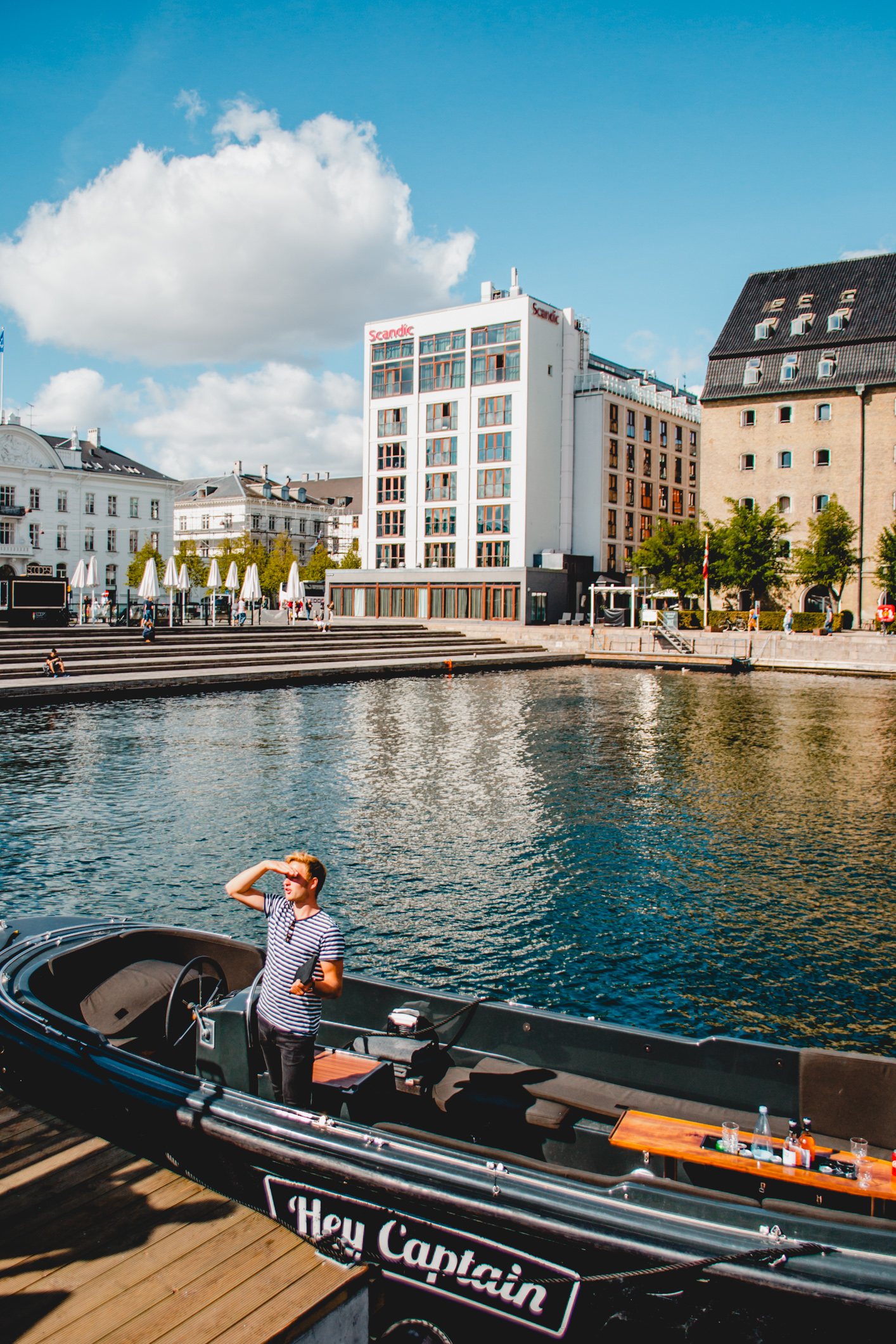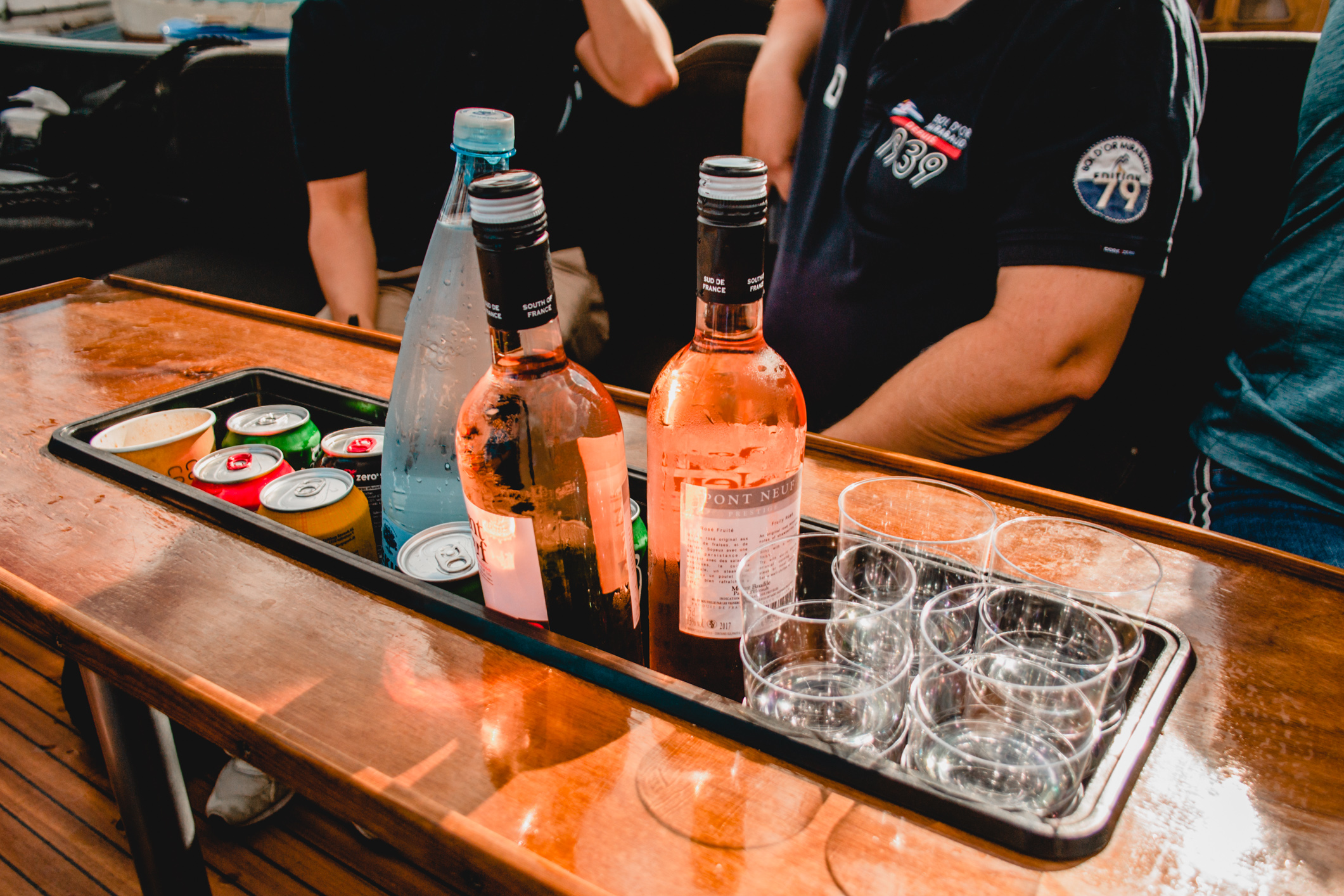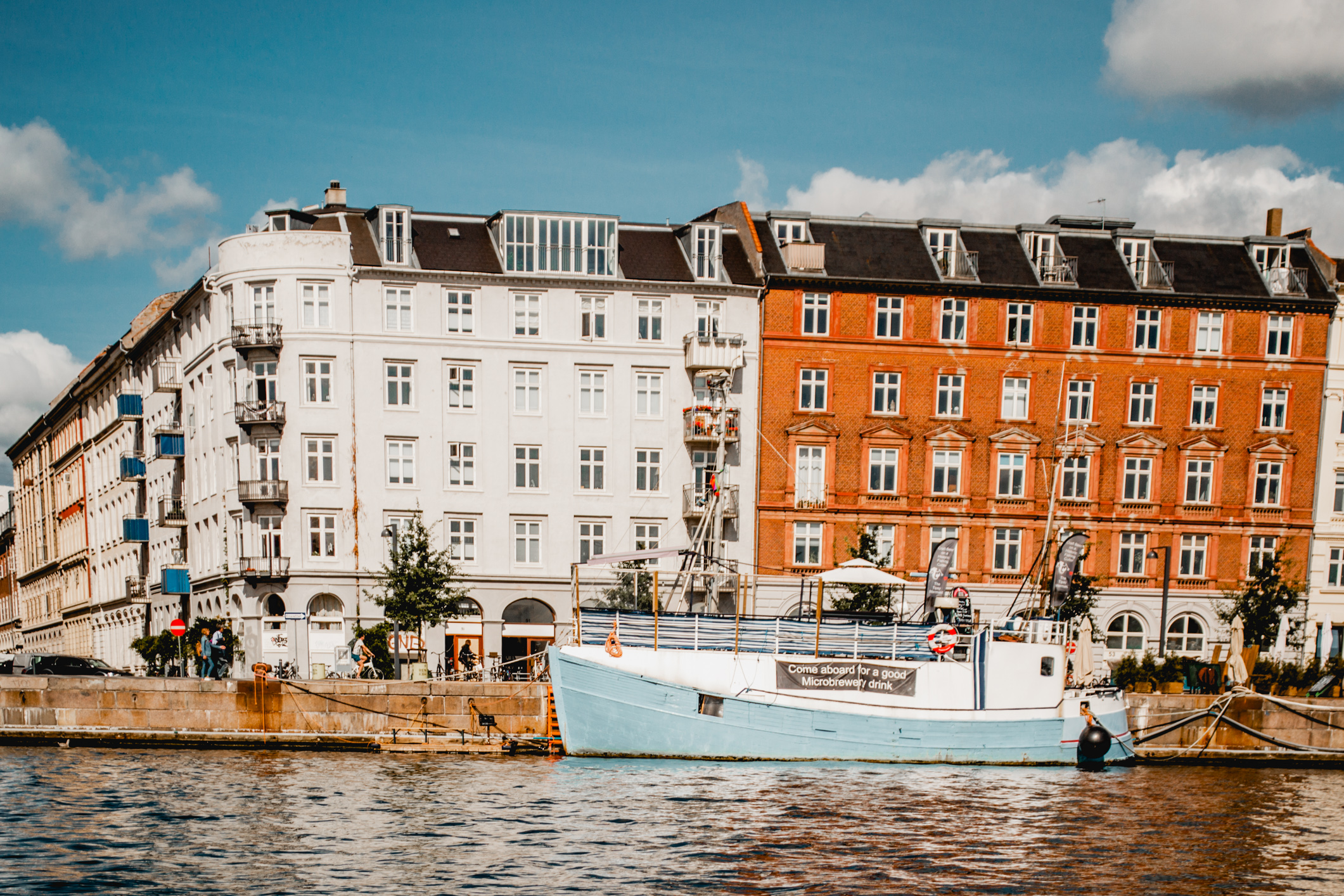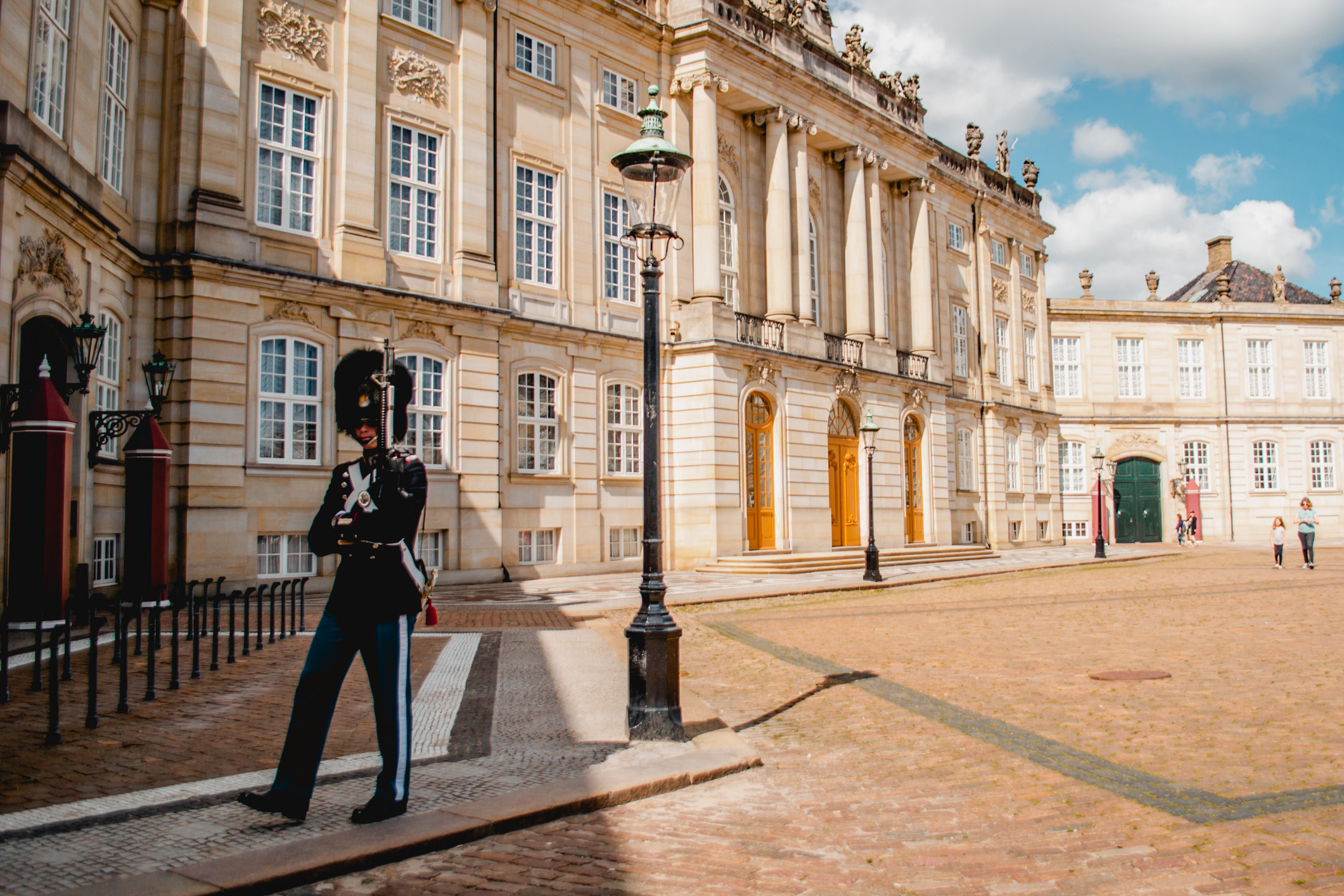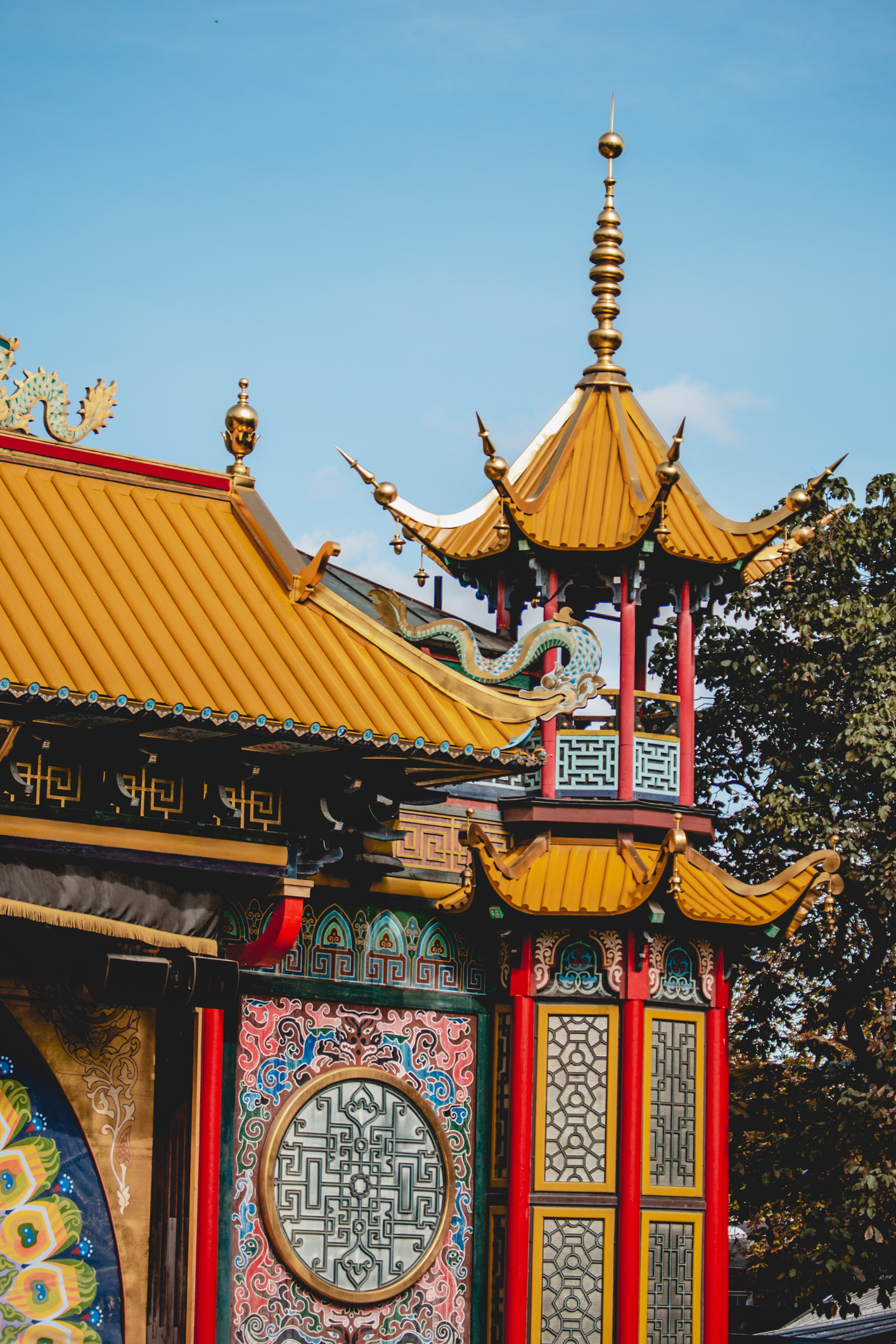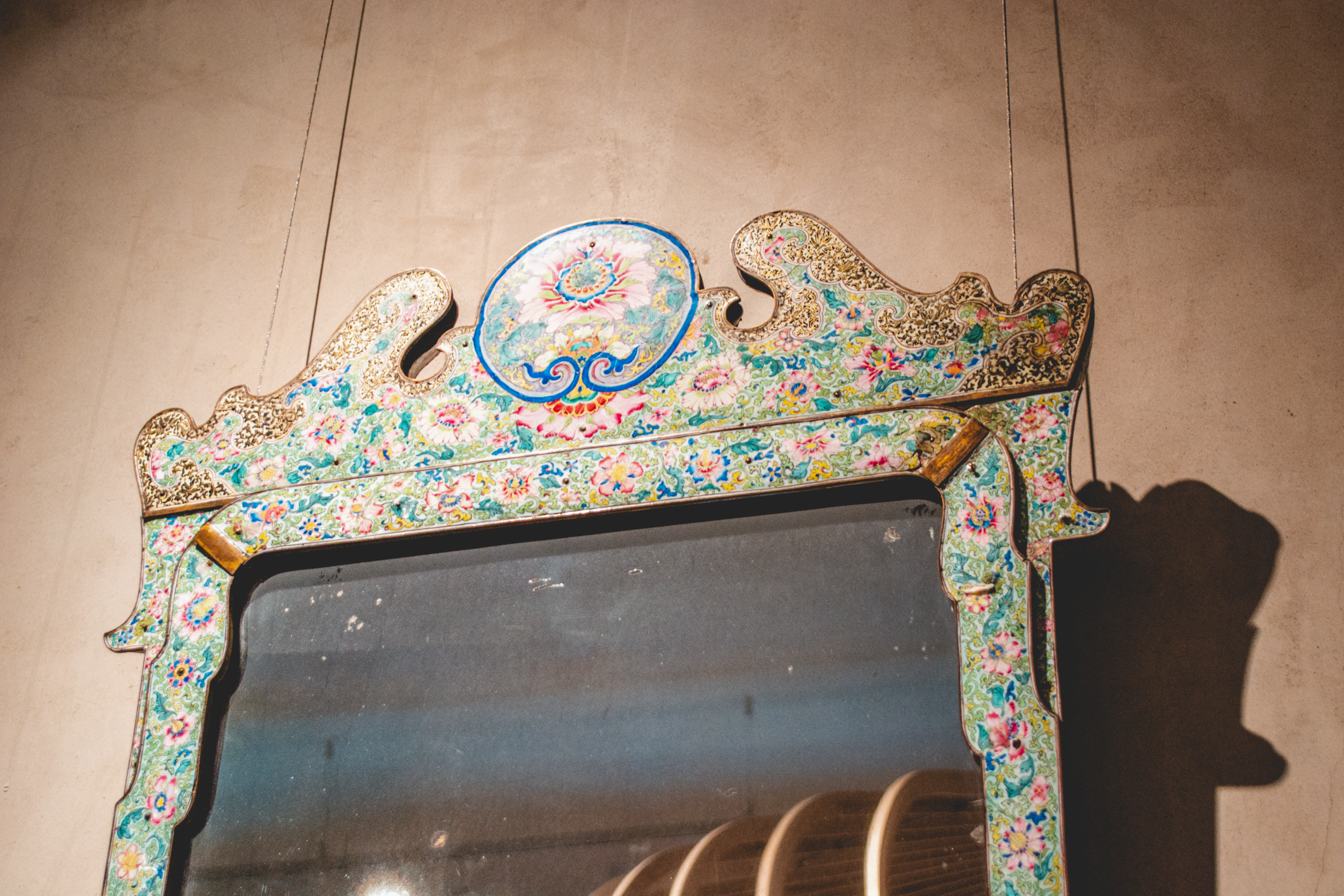The 728-foot wind turbines are some of the highest structures you see over the flat horizon of Copenhagen. They serve as a constant visual reminder of the Danes' commitment to sustainability while supplying more than 40% of Denmark’s energy supply and returning 7-12% earnings to investors
Find out what makes this coastal capital so sustainable and how you can take advantage of eco-friendly hotels, restaurants, and experiences in Copenhagen.
Destination: Copenhagen
Copenhagen is the capitol city of Denmark, one of the Scandinavian countries northeast of the United Kingdom (along with Norway and Sweden). Here, the air is clean, the flat streets are run by cyclists, the waterways are swimmable, and the horizon is dotted with giant wind turbines.
Awarded the European Green Capital Award in 2014, Copenhagen continues to be one most environmentally friendly cities in the world thanks to a number of sustainable initiatives.
Here’s what makes Copenhagen the Greenest City in the World:
BICYCLES, BICYCLES
One of our favorite ways to explore a new place is by bicycle. The "Copenhagenization" of the city in the 1960s introduced a new design concept placing people and bicycles first. To encourage the city to be less car dependent, city planning limited parking within the city center and taxes were raised on cars and gas. New bike racks, lanes, and traffic lights made riding a bike the easier, faster option for everyone's commute. Today, cycling is a part of everyday life. Students, families, professionals in suits and heels, and even grannies travel by bike.
Green Tip: Rent an electric bike from any of the train stations. The Bycyklen bikes have a super useful touch screen tablet with built-in GPS that can direct you to nearby attractions or help you find an address. At $30 DK ($5 USD) per hour, this is a great eco-friendly way to see the city while enjoying the fresh air.
WIND ENERGY
Towering over the flat horizon, twenty wind turbines slowly spin just offshore Copenhagen. They are part of the Middelgrunden Offshore Wind Farm, a community wind energy cooperative that it half owned by citizen investors and half owned by the municipal utility company.
This sharing of wind resources among stakeholders, where citizens, businesses, and the municipality own shares of green electricity, is how Denmark is creating a more climate-friendly country.
Up until the oil crisis of the 1970’s, Denmark was almost entirely dependent on fossil fuels imported from the Middle East. Once oil prices surged, Denmark took an interest in wind energy and is now a world leader in wind technologies.
All together, Denmark’s offshore wind farms cover over 40% of the country’s electricity needs. During unusually high wind events, Denmark’s wind turbines have produced 140% of it’s own electricity needs meeting it’s own demand and exporting excess power to Norway, Germany and Sweden.
“Denmark is on their way towards meeting 50% of their energy needs through wind energy by 2020.”
Denmark’s capital, Copenhagen, aims to become the first carbon neutral capital in the world with plans to set up more than 100 large wind turbines to meet their goal. By offering it’s citizens a means to take an active role in owning green electricity, Copenhagen is turning residents into wind entrepreneurs.
ORGANIC FOOD
Some of the tastiest food I’ve ever enjoyed was in Copenhagen. Granted, we managed to make it to a couple of Michelin-rated restaurants during our stay, but even the breakfast bread at our hotel was incredible.
At the root of all of the rich flavors is quite literally the soil. Despite it’s frigid conditions, the organic peat soil here is fertile, producing lots of root vegetables, cabbage, dark greens, berries, and whole grains (such as rye and oats).
The New Nordic Diet was developed out of this rich organic bounty traditionally eaten in Denmark, Finland, Iceland, Norway, and Sweden.
“More people in Denmark eat organic food than any other nation in the world.”
By making organic produce available as a logical staple and not a luxury item, more people consume what’s good for them. Organic food makes up 24% of the total food sales in Copenhagen and 88% of children and adults in daycare centers, nursing homes and schools are served organic food.
In emphasizing seasonality and sustainability of ingredients, this natural way of eating is an eco-friendly choice.
Green Tip: Be like the Danes and get the benefits from eating seasonal and sustainable ingredients while minimizing your Carbon footprint! Shop at local farmer’s markets or become a member of a food co-op/Community Supported Agriculture (CSA) farm in your area.
Notable eateries include:
The world famous Noma
The fully organic restaurant, Geranium
The nature-inspired restaurant, Vaekrst
The organic hot dog stand at Tivoli Gardens
The numerous options at the green street food market Reffen who are also committed to minimizing carbon emissions and using only local ingredients.
See more listings of organic restaurants in Copenhagen…
GREEN INFRASTRUCTURE
The city’s incineration plant had us smiling and shaking our heads in marvel over the cleverness behind its design.
Amager Bakke is an incredibly efficient and clean trash incinerator that converts waste to energy - handling all of the city’s district heating needs while cutting its CO2 emissions by 99.5%. Situated near the city center, the incinerator had to be pollution and odor-free so an innovative catalytic filtration system was designed that reduces the emissions to an odorless puff of steam.
“Copenhagen’s waste incinerator plant may be the cleanest burning building of its kind in the world.”
The incinerator is also a stunningly modern building with angled, mirrored walls and a wedged roof fit for a ski slope.
And so that’s what the project team did - to offset the costs of the new green landmark near the city center, the designers saw a modern recreational opportunity and developed Copenhill.
The outdoor park complete with a ski slope, 278-foot-tall climbing wall, hiking trails, green roof for picnics, and a full-service restaurant and bar will also host events and concerts.
Green Tip: Copenhill is expected to open in December 2018 but you will be able to pre-purchase your yearly pass starting in mid-October 2018 from their website, www.copenhill.dk
Getting There
We flew direct from Fort Lauderdale International Airport to Copenhagen Airport on Norwegian Airlines. Other airlines may include layovers in London’s Heathrow Airport or Germany’s Frankfurt Airport. Once there, transportation is very easy with options to take the bus, metro, or taxi the short 15 minute ride into the city. Our hotel also offered a shuttle service if you didn’t mind waiting 20 minutes (gave us a chance to grab a snack).
The preferred mode of transportation throughout the city is bicycling. Hourly electric bike rental stations are available at every metro stop and the built-in GPS system helps you navigate the city’s attractions on your terms.
If you plan on taking in as many of the local sights as possible, go with the Copenhagen Card. It gives you free rides on the city’s clean trains and buses plus admission to 86 museums and attractions.
Green Tip: Get the most out of a pre-purchased 48-hour Copenhagen card then bike the rest of your time there.
The biggest link between Copenhagen and Fort Lauderdale is that they share a watery vein. Just like Fort Lauderdale, Copenhagen has a city-wide canal system that opens into a large cruise hub. Many of the travelers we met were heading to one of the three large cruise terminals: Langelinie, Nordre Toldbod and Ocean Quay.
These photos were taken from the bus while on the move!
CLIMATE
We seem to always catch a place when the weather is great! The best time to visit Copenhagen is in the summer months of May through August when you get clear blue skies, long days, a light breeze, and temperatures in the 70’s by day and upper 50’s by night. The streets and parks are alive with people, bicycles, live music, and all around merriment.
Lower rates and fewer crowds can be found during the spring months of March to May, but come October, the city goes into hibernation as highs dip below 40 degrees F.
For many in Copenhagen, swimming, surfing, and paddleboarding are year-round sports but be sure to bring your wetsuit! At it’s warmest the water temperature is in the upper 60’s F (July and August). Otherwise you’re looking at sub-40 degrees F half of the year.
“Swimming in Copenhagen took my breathe away before it gave me life.”
Thousands of athletes compete in the KMD Copenhagen Ironman every August.
Culture
THE HAPPY PURSUIT OF HYGGE
Denmark has a subtle way of life that once you pick up on it, makes you want to wrap it up with a bow and bring it home. It’s the concept of hygge (“hue-guh”). It describes that feeling of wellbeing and contentment when you’re in a cozy environment. It’s not just about lighting candles and sitting in a cozy chair with a good book. It’s about consciously slowing down, recognizing the little joys, and allowing yourself to be filled by these moments.
The Danes’ awareness of a good moment has consistently made them one of the happiest countries in the world and one of the world’s best countries to live in.
The happiness quotient is partially a result of the Danish social welfare system that ensures equal rights to social security. Despite having to pay upwards of 45% in taxes, Danes are well taken care of in return. Parents receive a lifetime of support in raising their children, starting at birth when new parents split maternity or paternity leave during the first year. A generous allowance is provided for families with children regardless of income level and all schooling is both guaranteed and paid for by the municipality. Even college tuition is covered. Later in life, senior care, transportation, and meals-on-wheels programs are again paid for by the government.
In paying high taxes, everyone is committed to bettering the common good of their city so all they have to do is focus on moments of hygge.
Green Tip: Create simple rituals to invite hygge into your daily life. Brew a fresh cup of your favorite Rainforest Alliance Certified coffee or tea and take it outside to enjoy the sounds of nature as the world wakes up.
This is hygge…
Staying
AC Hotel Bella Sky
As one of the greenest cities in the world, Copenhagen has no shortage of eco-friendly lodging. More than 71% of hotel rooms are certified green incorporating green initiatives like low-flow toilets, living walls, green roofs, efficient energy systems, and recycling programs.
One of those hotels is AC Hotel Bella Sky.
When you go for breakfast at the AC Hotel Bella Sky, tell the Head Hostess, Janet, we say “hello!”. A worldly Dane who speaks five languages, Janet built her countryside log cottage out of wood imported from Canada. She happily showed us photos on her iPhone and was quick to invite us over next time we were in town. Danes are like this - warm, kind, and happy.
Part of the BC Hospitality Group, this hotel is an architectural standout just a ten minute bicycle ride from the city. Two towers build at a 15° inclination in opposite directions create unique angles that mimic the triangular design repeated throughout the glass and steel structure.
Serving as a partition between Hotel Bella Sky and downtown Copenhagen is a beautiful green space with extensive paved and dirt trails for biking, running, and walking. Living walls in the lobby, light-filled rooms, and locally sourced ingredients at the spectacular hotel restaurant, Basalt, bring the outdoors in.
AC Bella Sky is integrated into the Bella Center Copenhagen, a Green-Key Certified meeting center that integrates sustainability, or as they call it “Responsible Hospitality”, into their operations because they believe business run with the environment, people, and society in mind is good business. We agree!
Find more green hotels and hostels here…
Green Tip: Bring an electrical converter for your American gadgets. European voltage is higher than ours (220-volt vs 110-volt) and their outlets are two-pin so pack a two-pin 220-volt AC, 50Hz converter and travel multi-outlet like this one from Belkin, a favorite of ours.
Exploring
The best views of Villa de Leyva can be found from the Mirador el Santo.
[taking in the city by water]
If you, like us, steer clear of the herds of tourists in search of more intimate experiences when you travel, you’ll want to hop on the Hey Captain canal tour.
Get away from the crowds and meet your Captain at the Ofelia Plads next to the Royal Danish Playhouse.
Think classic boats, 12 passengers max, cozy blankets, and complimentary adult beverages. They truly managed to create a feel-good Hyggelig tour on the water!
Complimentary beverages and blankets add to the Hey Captain hygge experience.
Other fun options include packing a picnic and renting your own solar-powered GoBoat or cleaning the harbor by kayak with Kayak Republic who believe in good karma! Through their Green Kayak initiative, paddlers receive a free 2-hour rental in exchange for contributing to keeping Copenhagen’s harbors clean.
[taking in the city by land]
Over half of the residents of Copenhagen use bicycles as their primary mode of transportation. Thanks to smooth, flat streets, dedicated bike lanes, intersections, and racks, and law-abiding vehicular drivers, you will love biking around the city too.
Look for the electric bike rentals at any metro station. The Bycyklen bikes have a touch screen GPS-integrated tablet that make navigating the city and the sights a breeze. Just pay attention to the flow of local bike traffic.
[celebrating one love at Copenhagen Pride]
The warm summer months of July and August see a lot of outdoor events and concerts in Copenhagen. Our reason for travel in August was to cheer on my father in his first Ironman Triathlon, the KMD Ironman. During our stay, we found ourselves surrounded by the rainbows and colorful costumes of happy people celebrating the Copenhagen Pride Festival. Other events in August included the world's biggest free chill-out electronic downtempo festival, Stella Polaris, the Copenhagen Cooking and Food Festival, and the HAVEN Festival, a free-spirited melting pot of music, food, beer, and art.
A listing of free and otherwise neat events throughout the year in Copenhagen can be found here…
[gardens and the golden tower at Tivoli]
Tivoli is best known as the second-oldest operating amusement park in the world (opening in 1843) and the inspiration for Disneyland. We were pleasantly surprised to see how cheesy it was not! The rides are legit with four roller coasters, giant spinning swings, and the stomach dropping Golden Tower. The gardens are also spectacular filled with jewel-tone colors, fragrant roses, and lounge chairs scattered throughout green open spaces that coax you to sit and relax.
Photo Tip: Get here early before the crowds to get the best photographs and the most ride time!
[danish design]
For a creative look at sustainable design, visit the Design Museum Denmark. The permanent 20th Century exhibit exemplifies the Danes consideration for the environment within traditional Danish design. While the Danish Chair exhibit tells the story of the evolution of Danish design through a hall of chairs.
Green Tip: End your visit with a sustainably-sourced salmon smørrebrød - a traditional Danish open-faced sandwich - in the cafe courtyard and swing by the Museum Shop for a unique souvenir.
An entire outfit made of plastic straws at the Danish Design Museum.
To say the least, Copenhagen, a city known or it’s high quality of life, happy citizens, and model green initiatives, has left a big impression on us and how we view our own city of Fort Lauderdale.
It makes us wonder, do sustainable cities activate happy people or do happy people activate sustainable cities?
To see more images and stories from our travels, follow @olapicreative on Instagram and Facebook!
